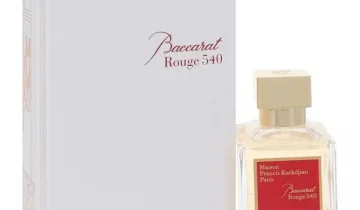Written by Ruby Ho
Edited by CHIQIO
Key words: perfume, inspiration, creation, personal experience
Creating a fragrance is an art, and like all art forms, it requires inspiration. The world of perfumery is vast, with endless possibilities for unique scents that evoke emotions and memories. In this blog post, we’ll explore the various inspiration sources for perfume, shedding light on what drives perfumers to craft their signature blends. Discover how nature, culture, personal experiences, and more contribute to the enchanting world of fragrances.
Nature as an Inspiration Source for Perfume
One of the most profound inspiration sources for perfume is nature. From blooming flowers to lush forests, the natural world offers a vast array of scents that inspire perfumers. Here are some ways nature influences fragrance creation:
- Floral Scents: Flowers like roses, jasmine, and lavender are classic ingredients in perfumery. Their timeless, elegant aromas are perfect for creating romantic and soothing perfumes.
- Citrus Notes: Citrus fruits such as oranges, lemons, and grapefruits provide fresh, zesty notes that invigorate the senses. These scents are often used in summer and unisex fragrances.
- Woody Aromas: Woods like sandalwood, cedarwood, and pine offer rich, earthy notes that add depth and warmth to a perfume. They are ideal for creating sophisticated, long-lasting fragrances.
- Herbal and Spicy Tones: Herbs and spices like mint, basil, and cinnamon add a unique twist to perfumes, making them more dynamic and intriguing.
Culture and History as Inspiration Sources for Perfume
Cultural heritage and historical events are significant inspiration sources for perfume. Perfume creators often draw from different cultures and eras to craft scents that tell a story or evoke a specific time period. Here are some examples:
- Ancient Civilizations: The use of fragrances dates back to ancient civilizations such as Egypt, Greece, and Rome. Perfumes inspired by these cultures often incorporate exotic and luxurious ingredients like myrrh, frankincense, and oud.
- Cultural Festivals and Traditions: Festivals and traditions from around the world provide a rich tapestry of scents. For instance, the spices and flowers used during Indian festivals or the aromatic herbs from Mediterranean cuisines can inspire unique and diverse perfumes.
- Art and Literature: Works of art and literature often inspire perfumers to create scents that capture the essence of a painting, poem, or novel. The emotions and imagery evoked by these works can translate into complex, multi-faceted fragrances.
Personal Experiences as Inspiration Sources for Perfume
Personal experiences and memories are powerful inspiration sources for perfume. Many perfumers create scents that reflect their own life experiences, from childhood memories to travels around the world. Here’s how personal experiences influence fragrance creation:
- Childhood Memories: Scents have a strong connection to memory. A perfumer might recreate the smell of a favorite flower from their childhood garden or the aroma of homemade treats.
- Travel Experiences: Traveling exposes perfumers to new and exotic scents. The spices of a Moroccan market, the flowers of a Japanese garden, or the fresh ocean air of a tropical island can all serve as inspiration for new perfumes.
- Emotional Journeys: Personal milestones and emotional journeys, such as falling in love or overcoming a challenge, can inspire perfumes that evoke similar feelings and emotions.
Art and Music as Inspiration Sources for Perfume
Artistic expressions like visual art and music are also potent inspiration sources for perfume. The emotions and stories conveyed through art and music can be translated into the olfactory world. Here are some examples:
- Visual Art: Paintings and sculptures often inspire perfumers to create scents that capture the colors, textures, and emotions of the artwork. A vibrant, abstract painting might inspire a bold, avant-garde fragrance, while a serene landscape could lead to a fresh, calming scent.
- Music: Music, with its ability to evoke powerful emotions, serves as a rich source of inspiration. A perfumer might create a fragrance that reflects the rhythm and mood of a favorite song, from the energetic beats of pop music to the soulful melodies of jazz.
Final Thoughts
The world of perfumery is filled with endless inspiration sources for perfume. From the natural beauty of flowers and forests to the rich cultural traditions and personal memories, each fragrance tells a unique story. By understanding these inspiration sources for perfume, we can gain a deeper appreciation for the art and creativity that goes into each bottle. Whether you are a perfume enthusiast or simply curious about the creative process, exploring these sources of inspiration will enhance your enjoyment and understanding of fragrances.
In conclusion, inspiration sources for perfume are diverse and multifaceted, encompassing nature, culture, personal experiences, and artistic expressions. Each source contributes to the creation of unique and memorable scents that captivate our senses and evoke powerful emotions. Embrace the artistry behind perfumery and discover how these inspiration sources for perfume shape the fragrances we love.


 No products in the cart.
No products in the cart.